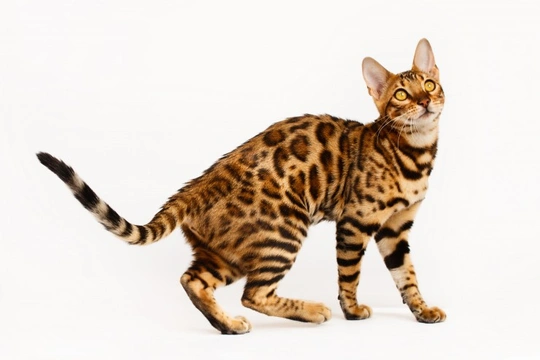
Patellar Luxation in Cats
Patellar luxation is a painful condition where a cat's knee cap slips out of its joint which is typically to the inside of the knee. When this happens, it's referred to as medial, but sometimes the knee cap can dislocate the other way, to the outside of the knee in which case it is referred to as lateral. Luckily, it is quite a rare condition although studies have shown that some breeds are more predisposed to inheriting patellar luxation than others and any cat known to suffer from the condition should be spayed and neutered when the time is right to prevent them from being used in a breeding programme.
The Causes
Patellar luxation in cats can happen for various reasons and this includes the following:
- An injury or trauma to the knee or knee cap
- It could be a congenital deformity
- Kittens can inherit the malformation from their parents because it is a hereditary defect they can pass on to their offspring
When the problem is hereditary or congenital, both of a cat's back legs are typically affected by the condition and the signs of there being a problem usually develop when cats are around four months old. The result is lameness and cats have a strange bunny-hopping type gait. Sometimes if the condition is more severe, a cat's back legs might give out altogether.
Cats can suffer from episodic or permanent luxation and studies have suggested that several genes could be responsible for cats inheriting the condition which is referred to as being a polygenic disorder. Research has also indicated that diet, environment and lifestyle could be key factors into why some cats develop patellar luxation whereas others do not.
Symptoms to Watch Out For
The signs of there being something wrong depends on the severity of a cat's condition. However, as time passes degenerative arthritis takes hold which complicates things considerably. Typical symptoms of patellar luxation in cats could include the following:
- Abnormal movement in back legs
- An abnormal gait which is reminiscent of a bunny hop
- Sudden lameness on hind legs for no apparent reason
Diagnosing the Problem
A vet would thoroughly examine a cat and ideally should be given a cat's full medical history. It also helps if a vet knows a cat's ancestry to establish if any cats in their lineage suffered from patellar luxation. If they did, the risk of a kitten inheriting the disorder is greatly increased. Other tests a vet might well recommend carrying out could include the following:
- Palpation of a cat's knee cap
- X-rays of affected limbs
- Taking a fluid sample from an affected joint
All too often when a cat suffers from congenital patellar luxation, they also develop hip dysplasia and if this is the case, cats generally develop osteoarthritis as they get older.
Breeds Most at Risk
Any cat can suffer from the condition, but some breeds seem to be more predisposed to inheriting the disorder than others and this includes the following breeds:
- Bengal
- Chartreux
- Cornish Rex
- Devon Rex
- Abyssinian
Treatment Options
When it comes to treating cats with patellar luxation, for the moment surgery is the preferred treatment for cats suffering from a severe case of the condition. Surgery would also reduce the chances of a cat developing osteoarthritis as a result of long-term changes to a joint.
Living with a Cat with Patellar Luxation
Should a vet have recommended surgery to correct a cat's knee cap, follow up treatments are needed to see if the procedure was successful. After surgery and during their convalescent period, cats need to be kept quiet and they should not be allowed to jump up on anything. The downside to surgically correcting the problem, is that the condition recurs in around fifty percent of cats although to a much less severe extent.
Good Breeding Practices are Essential
Because congenital patellar luxation is a hereditary disorder, any cat known to suffer from the condition should never be used in a breeding programme as this is the only way of preventing offspring from inheriting the disorder. As such, cats with patellar luxation should be spayed or neutered when the time is right to prevent them from mating.



